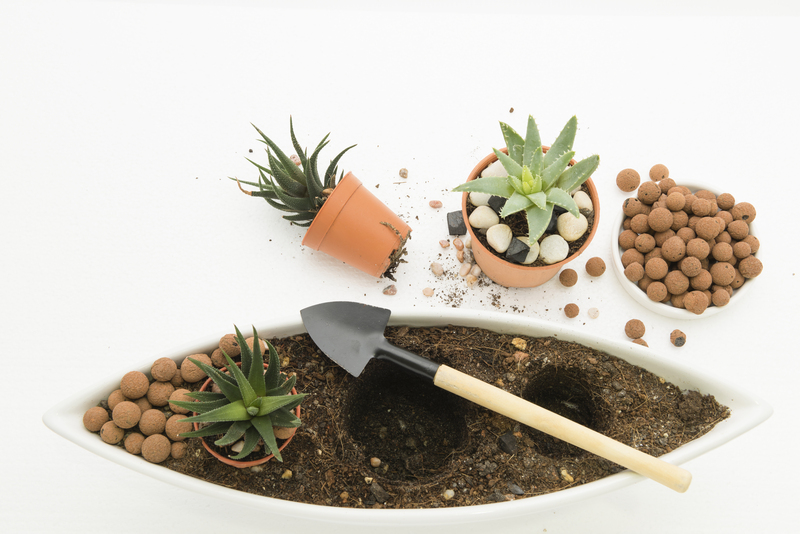Unlock Weed Control Success with These 3 Tips
Posted on 07/09/2025
Unlock Weed Control Success with These 3 Tips
Weed control is a fundamental aspect of successful gardening, landscaping, and agricultural management. Every gardener and farmer knows the frustration of seeing unwanted plants competing with their crops or ornamentals. Fortunately, mastering effective weed control strategies can save you hours of labor and significantly improve plant health and yield. If you're looking to unlock weed control success, this in-depth article will share the top three tips to keep weeds at bay, along with actionable advice and expert insights.
Why Is Weed Control Essential?
Before diving into the best tips for controlling weeds, it's crucial to understand why consistent weed management matters:
- Weeds compete with your desired plants for sunlight, water, and nutrients, leading to lower yields and weak growth.
- Some weeds harbor pests and diseases that can harm your valuable crops or beautiful landscaping.
- Uncontrolled weeds can quickly spread, becoming overwhelming and much tougher to remove later.
With the stakes so high, unlocking the secrets of effective weed control should be a top priority for every grower. Let's explore the top three tips to achieve weed-free success.

Tip 1: Implement Cultural Practices for Preventative Weed Control
The adage "an ounce of prevention is worth a pound of cure" rings especially true when it comes to weed management. Preventing weeds from germinating is far more efficient than removing them after they appear. Here's how cultural weed control techniques can work for you:
Use Mulching to Block Light and Moisture
- Organic mulches (e.g., straw, wood chips, shredded leaves) form a physical barrier that prevents weed seeds from receiving the light they need to sprout. As an added benefit, they retain soil moisture and add organic matter as they decompose.
- Inorganic mulches (e.g., landscape fabric, black plastic) offer long-lasting suppression, especially in planting beds or pathways where replanting isn't frequent.
- Apply mulch 2-4 inches deep for maximum effectiveness but avoid piling it against plant stems.
Practice Crop Rotation and Spacing
- Rotate crops in your vegetable garden to disrupt the life cycle of weed species. Each crop type has different canopy development, shading out weeds at various times.
- Plant crops densely enough that their foliage shades the soil, which minimizes sunlight exposure and suppresses weed growth naturally.
- Use cover crops (like clover, rye, or buckwheat) during off-seasons to outcompete weeds and add nutrients back to the soil.
Water Strategically
- Drip irrigation or soaker hoses deliver water directly to your crops' roots, minimizing moisture available for weeds between rows.
- Water early in the morning to reduce overall weed germination.
Cultural weed control sets a strong foundation, drastically reducing how many weeds appear in the first place. Combined with other methods, you'll find your garden or field much easier to maintain.
Tip 2: Master Mechanical and Physical Weed Control Methods
Physical removal of weeds is often necessary, especially when few escape your initial preventative efforts. With the right approach, you'll avoid backbreaking labor and prevent weed spreads. Consider these effective mechanical weed management methods:
Hand-Pulling: Best for Small-Scale and Sensitive Areas
- Directly pulling weeds by hand ensures you remove the entire plant, including the root, especially if performed when soil is moist.
- Wear gloves to protect your hands from thorns or irritating sap.
- Monitor your beds regularly – the sooner you catch weeds, the easier they are to pull out.
Hoeing and Cultivation: Cover More Ground Efficiently
- A sharp hoe slices through weed seedlings just below the soil surface. This method is quick and works best for annual weeds.
- Cultivation tools like stirrup hoes and wheel hoes help in larger vegetable gardens and fields.
- Be careful not to disturb the soil too deeply, as bringing more dormant weed seeds to the surface can lead to new problems. Shallow cultivation is best for ongoing management.
Mowing and Trimming: For Lawns and Perennial Beds
- Regularly mow your lawn at the recommended height for your grass type — taller grass shades out many potential weeds.
- String trimmers help cut down weeds in tough-to-reach spots or along edges and pathways.
- Never let weeds flower or set seed if you can help it. Cutting them down regularly helps prevent future infestations by reducing their reproductive success.
Mechanical weed management is labor-intensive, but highly effective when used proactively on young weeds and small infestations. Pair these tactics with tip #1, and you're well on your way to unlocking weed control success.
Tip 3: Use Smart Chemical Weed Control Wisely
When cultural and physical weed control measures are insufficient--such as with vigorous perennial weeds or large-scale invasions--judicious use of herbicides may be necessary. Using chemicals strategically can ensure they remain a valuable tool without harming beneficial plants or the environment.
Choose The Right Herbicide for the Job
- There are two main categories: Pre-emergent herbicides, which prevent seeds from sprouting, and post-emergent herbicides, which kill established weeds.
- Pre-emergents are ideal for lawns, paths, and around perennials, especially in the early spring before weeds appear.
- Post-emergents target visible weeds--choose selective products for lawns and beds, and non-selective ones like glyphosate only for areas where you want to kill all vegetation.
Apply Herbicides With Precision
- Always follow label instructions on rate, timing, and safety measures to protect yourself and surrounding plants.
- Apply during calm, dry days to prevent drift onto desirable plants and maximize absorption by weeds.
- Spot-treat rather than blanket-spray to minimize chemical use.
Practice Integrated Weed Management
- Rotate herbicides annually to prevent resistance among weed populations.
- Never rely solely on chemicals--integrate with cultural and physical control to ensure lasting success.
- Consider organic options like horticultural vinegar or natural herbicide blends for eco-friendlier areas.
Chemical weed control is a powerful ally, but only when used with care and responsibility. It offers rapid relief so you can regain the upper hand, especially for stubborn weeds that defy other measures.
Bonus: Monitor Your Weed Control Results and Adjust
The most successful weed management programs evolve over time. Regularly inspect your areas for any new weed outbreaks, and take swift action if necessary. Track which methods work best for your specific conditions and adjust your approach as weather, new weeds, or crops change. Don't forget to share your successes and tips with fellow gardeners or farmers to build a stronger, weed-free community!
Frequently Asked Questions About Weed Control
Can I control weeds without chemicals?
Absolutely! Many gardeners and farmers opt for organic weed management techniques, like mulching, hand-pulling, and flame weeding. Consistent application of preventative and physical control methods can produce excellent results without the need for synthetic herbicides.
What is the best time of year for weed control?
Early spring and late fall are prime times for applying herbicides and laying mulch, as these are moments when weed pressure is highest or weeds are most vulnerable. However, monitoring and manual removal can and should continue throughout the growing season to prevent weeds from establishing and spreading.
Do landscape fabrics really work for weed control?
Landscape fabrics can be highly effective in perennial beds, under mulch, and in pathways. They significantly reduce the light reaching weed seeds and prevent their germination. For best results, install fabric carefully and cover with organic mulch for improved appearance and effectiveness.

Conclusion: Achieve Weed-Free Success with Integrated Weed Control Strategies
To unlock weed control success in your garden, lawn, or field, it's vital to blend multiple strategies--preventative cultural practices, timely mechanical removal, and smart chemical interventions. The three top tips:
- Implement cultural practices like mulching, crop rotation, and judicious watering to stop weeds before they start.
- Master mechanical weed control with hand-pulling, hoeing, and mowing to keep your growing spaces clear and productive.
- Use chemical weed control thoughtfully for rapid results against the most stubborn or widespread weeds.
By combining these practical tips and customizing them to your unique growing environment, you'll enjoy healthier plants, higher yields, and beautiful, weed-free landscapes. Don't let weeds get the upper hand--start your path to weed control success today!
Get Started Today: Take Action for a Weed-Free Future
Whether you're a beginner gardener, professional landscaper, or large-scale farmer, implementing these proven weed management techniques will set you up for lasting success. Remember: every action you take--from mulching early to cutting down weeds before they seed--pays off many times over as you spend less time fighting weeds and more time enjoying your thriving plants.
Begin unlocking weed control success now with these simple yet powerful tips, and turn your yard or field into a flourishing, weed-free oasis!

